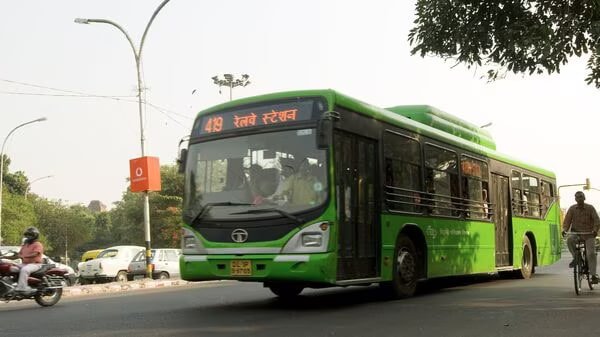Enhancing public transportation networks can yield significant socio-economic advantages, prompting the need to reduce private vehicle usage through increased taxation and the cessation of covert subsidies.
The Importance of Inclusive and Efficient Public Transportation in Indian Cities
City governments in India face the critical task of prioritizing and enhancing inclusive, safe, and efficient public transportation systems to promote the well-being, economic productivity, and social engagement of their residents. Whether individuals opt for walking, driving, or utilizing public transit options like trains, meticulous planning is essential to ensure timely and secure commuting experiences for all.
Encouraging Public Transportation Engagement
In contrast to thriving urban centers worldwide, Indian cities must strive to implement policies that render the cost of owning and operating private vehicles notably higher than utilizing public transportation. The prevalent trend in India sees the burgeoning middle-class gravitating towards private vehicle usage, resulting in detrimental outcomes such as air pollution, noise pollution, diminished productivity caused by protracted commutes on congested roads, and limited leisure time. Notably, Delhi’s renowned 400km Metro rail, while emblematic of public transit aspirations, merely attains 46% of its anticipated ridership due to the superior efficiency of private two-wheelers for the city’s average trip length of less than 10km. Even if offered at no charge, the Delhi Metro would struggle to attract riders due to the prevalence of motorized two-wheelers in the majority of households. Moreover, even with a hypothetical transition to fully electric two-wheelers, they would persist in occupying roadway space and contributing to congestion.
Addressing the Safety and Accessibility of Public Transit
Furthermore, it is imperative to acknowledge that every public transit user also assumes the role of a pedestrian, and the safety of walking in Indian urban environments is often compromised, accentuating the urgency for comprehensive transportation planning.
Shifting Urban Dynamics: Rethinking Public Transportation Priorities
In the realm of urban transportation, the choice to transition from two-wheelers to buses, rather than an immediate leap to metro networks, presents a complex and politically charged conundrum. This pivotal decision-making process underscores the necessity for a substantial evolution in our urban policies.
Meeting Imperatives: The Foundation of Urban Transportation
Urban transportation planning holds several critical imperatives that necessitate careful consideration. It demands meticulous planning that accommodates travel patterns intertwined with land uses influencing travel demand. Furthermore, it involves evaluating the city’s existing mobility infrastructure, dictating requisite investments, and understanding the operational requisites of disparate systems. Smooth mode transitions emerge as the keystone of a well-designed transportation system. A paramount focus lies in meticulously planning the expansion of public transport networks, mandating precise and up-to-date transport-related data as the fundamental ‘single source of truth’ for all stakeholders.
The Call for Unified Authority: A Cornerstone of Effective Planning
To address the intricacies of transportation planning in urban centers, the establishment of a Unified Metropolitan Transportation Authority for large urban agglomerations, or a regional authority for small and medium-sized towns, is imperative. This approach is encapsulated as a ‘best practice’ in the National Urban Transport Policy of 2006, serving as the linchpin for a singular focal point of coordination and decision-making. A unified authority is poised to spearhead long-term transportation infrastructure investment plans, instilling investor confidence in the government’s long-term vision and ensuring unwavering policy continuity. Notably, the prudent management of such plans safeguards against potential compromising factors, avoiding the pitfalls of conflicting initiatives such as road widening along designated metro routes, which could jeopardize the overarching success of the metro project.
By shifting our focus from two-wheelers to a robust public bus network and judiciously orchestrating the progression towards comprehensive metro systems, we embark on a transformative journey that not only optimizes urban transportation but also revitalizes the fabric of our cities, providing enhanced sustainability and prosperity for all inhabitants.
Maximizing Public Transportation Efficiency for Economic Growth
In the pursuit of economic efficiency and urban development, a holistic approach to public transportation management can significantly impact a city’s financial landscape. Integrating various modes of transportation under a single authority can yield substantial benefits, offering passengers seamless connectivity and enhancing revenue streams. This unified approach can also justify necessary measures such as fare revisions and technological innovations to elevate the overall commuting experience.
Integrating Modes of Transportation for Last-Mile Connectivity
By treating each project as a catalytic venture, transportation entities can optimize their operations and revenue potential. For instance, a metro rail corporation can take a multifaceted approach by incorporating bus or para-transit systems to provide commuters with last-mile connectivity. The Indian Port Rail Corporation serves as a prime example, efficiently managing the railway connections between ports and hinterlands, demonstrating the potential for unified transportation solutions.
Optimizing Financial Models for Sustainable Urban Development
Cities with long-term transportation plans possess a competitive advantage, attracting credit enhancements and sovereign guarantees while mitigating state governments’ debt burdens. A comprehensive financial model tailored to urban transportation can facilitate public-private partnerships, lifecycle management, and investor engagement, paving the way for sustainable urban development.
Leveraging Technology and Strategic Partnerships
Embracing advanced information and communication technologies, such as passenger information systems and streamlined fare collection methods, further catalyzes the seamless integration of public transportation systems. Additionally, incentivizing passengers through discounts on retail transactions at stations can drive higher ridership and financial sustainability.
Rethinking Subsidies and Urbanization Strategy
Local governments should reconsider the hidden subsidies that favor personal vehicles, such as continuous road expansion, free parking, and easily accessible financing. As long as fossil fuels remain prevalent, petrol and diesel vehicles will continue to contribute to pollution. In response, governments should enforce congestion taxes and stricter regulations for exhaust and noise pollution, shifting the burden of environmental impact onto the polluters.
Moreover, implementing a “beneficiaries pay” approach suggests that property owners benefiting from proximity to public transportation infrastructure should contribute to its maintenance. This can be achieved through mechanisms such as property tax increments and additional cesses.
Sustainable Urbanization for India’s Future
India has invested significantly in urbanization, and the success of this endeavor hinges on mitigating the negative impacts of unplanned urbanization while harnessing the advantages of well-structured cities. It is imperative for every city to devise its transport strategies and ensure their sustainable financing.
Mobilizing Government Action
With approximately 8,000 cities requiring transportation planning, the central, state, and local governments must collaboratively spearhead proactive measures to address these challenges and ensure efficient urban mobility.











